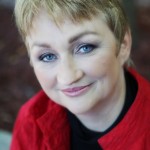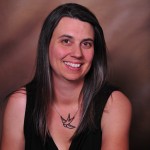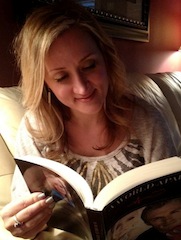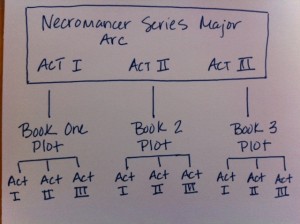Thanks for stopping by today. I’ve been looking forward to this post. You can also find it here, on Jocelyn Dex’s blog: Demons Do It Better, which is an appropriate name given our “panel” discussion today on demons. Jocelyn features demons in her book Araya’s Addiction and they play a big role in my Necromancer Books. To get us in the mood, here is the cover of Araya’s Addiction featuring a hunky demon 🙂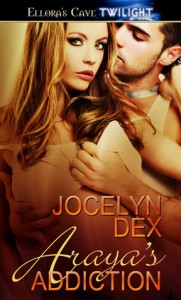
So let’s get to the discussion and please join us by leaving a comment!
More and more books feature demons, all taking a slightly different approach, which is fun like where they come from, their powers and types. Can you speak a little to the demons in your stories?
Jocelyn: I created several different types of demons for my Sempire Seductions series, but the Sempires can teleport, are very strong, and without, um, semen, they will weaken and eventually die. (Hey, I write erotic romance. It works.) Most of them also carry over some sort of power from their fathers.
Mimi: I loved the semen factor in your book! I don’t know what that says about me, but it’s a unique approach. My demons come from another realm and have interfered, influenced the human realm going back to ancient Sumeria, if not further. They’re not demons from “Hell”, and have a very defined social structure. That’s about all I can say 🙂
Let’s talk demons vs other supernatural males, like vampires, werewolves, fae, etc.
Mimi: There’s something to me that’s very primal about demons. I love vampires, but vampires almost seem too polished, and they were also once human. Maybe it’s their age as well, making them somewhat jaded. Demons feel more dirty and sweaty to me, LOL. And when you unleash the demon, you let loose that primal force, like a hurricane, that you can’t control. It’s scary and frickin’ sexy at the same time.
Jocelyn: Ha. Dirty and sweaty. I agree with that. I like the grittiness of demons and I feel like there are no rules with them. I also dig vampires, but there are so many preconceived notions when it comes to them. Demons can be whatever you want without too many preconceived ideas of what they should be.
I’m not a big fan of shifters (werewolves, big cats, etc.), but every once in awhile I come across a story with shifters that catches my interest and turns out okay. I read a gargoyle romance a few months ago and really enjoyed that. It was something different and I’m definitely interested in reading more.
Are your demons good or bad or somewhere in between?
Mimi: I like my demons to play in the moral gray areas. While they are not evil, they may at times take actions that stretch those boundaries. My demons come from another dimension and their take on what’s right or wrong is shaped by an entirely different social structure.
Jocelyn: Some of my demons are good, some are bad, but that’s really a matter of perspective. Like Mimi said, the demons’ take on what’s right or wrong is shaped by the world they’re from so it may not jive with humans’ take on right and wrong.
Do they come from another world? How do they coexist in the human world?
Jocelyn: Most of the demons in my stories come from the demon realm and most want to live in the more pleasant human realm or in the veil between realms. Some want to make trouble but most want to live peacefully, undetected by humans.
Mimi: I jumped the gun and talked about this in the first question. How do they coexist? That is an interesting question. Like Jocelyn said, some do blend in pretending to be human, and some want to cause trouble J
What about some favorite demon heroes from other books or shows?
Mimi: Greyson from Stacia Kane’s Megan Chase series. I also like Ryan from Diana Rowland’s Demon Summoner series, but I’m ready for her to unleash him already. I’m getting a little fatigued with reading about Kara sleeping with every other demon besides Ryan. Talking television, I really liked Cole from Charmed, but hate what they did to him. I wished they would have kept him around, but the actor went on to greener pastures.
Jocelyn: Oooh! Oooh! Me too! Cole from Charmed. Oh man, I loved his character and I was also pissed about what they did to him. I totally blamed Phoebe for his ultimate demise. Bitch. Haha. Anyway, in books, I love Larissa Ione’s Wraith. He’s a sexy badass demon with a smartass attitude. Love him.
Oh and I can’t forget Crowley from Supernatural. He’s a bad demon but every once in a while does something surprisingly helpful and he has a certain charm. Maybe it’s the accent. 🙂
What are your plans for future demon characters?
Jocelyn: Oh, so many plans! Even though book 2 and 3 of my Sempire Seductions series are still in edits and not yet released, I’ve already started a new series featuring more demons. Different demons, and I love the characters, but I can’t say more than that just yet.
Mimi: Awesome! Can’t wait.
Any final thoughts on why you like demon heroes/heroines?
Mimi: I like that they’re not your typical heroes and are sometimes driven by primal forces beyond their control which makes exploring their vulnerabilities that much more interesting.
Jocelyn: They are the ultimate bad boys and bad girls. What’s not to like?
Thanks for joining the discussion! Here’s info on Jocelyn:
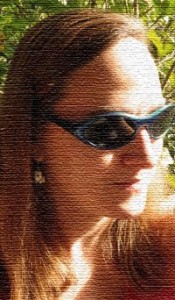 Jocelyn was born in Iowa and currently resides in hot-as-hell Texas. She shares her home with her very own 6’4″ alpha male and varying numbers of spoiled cats and dogs. Teaching one of her dogs to file his own nails is one of her all-time favorite accomplishments.
Jocelyn was born in Iowa and currently resides in hot-as-hell Texas. She shares her home with her very own 6’4″ alpha male and varying numbers of spoiled cats and dogs. Teaching one of her dogs to file his own nails is one of her all-time favorite accomplishments.

